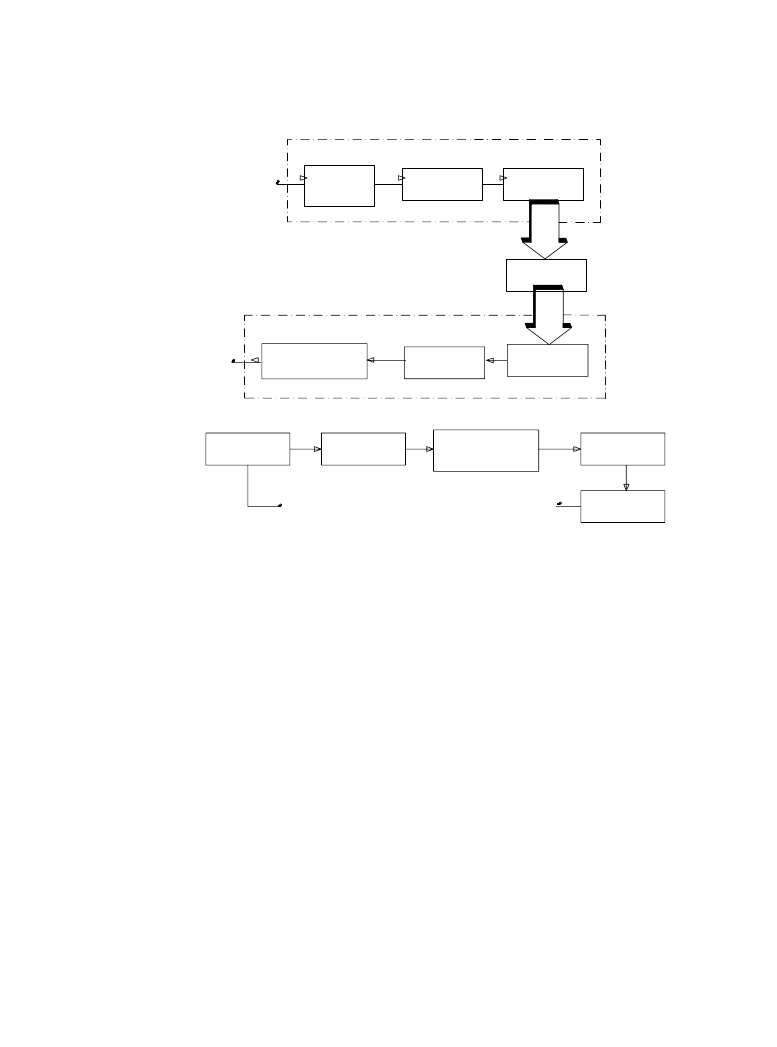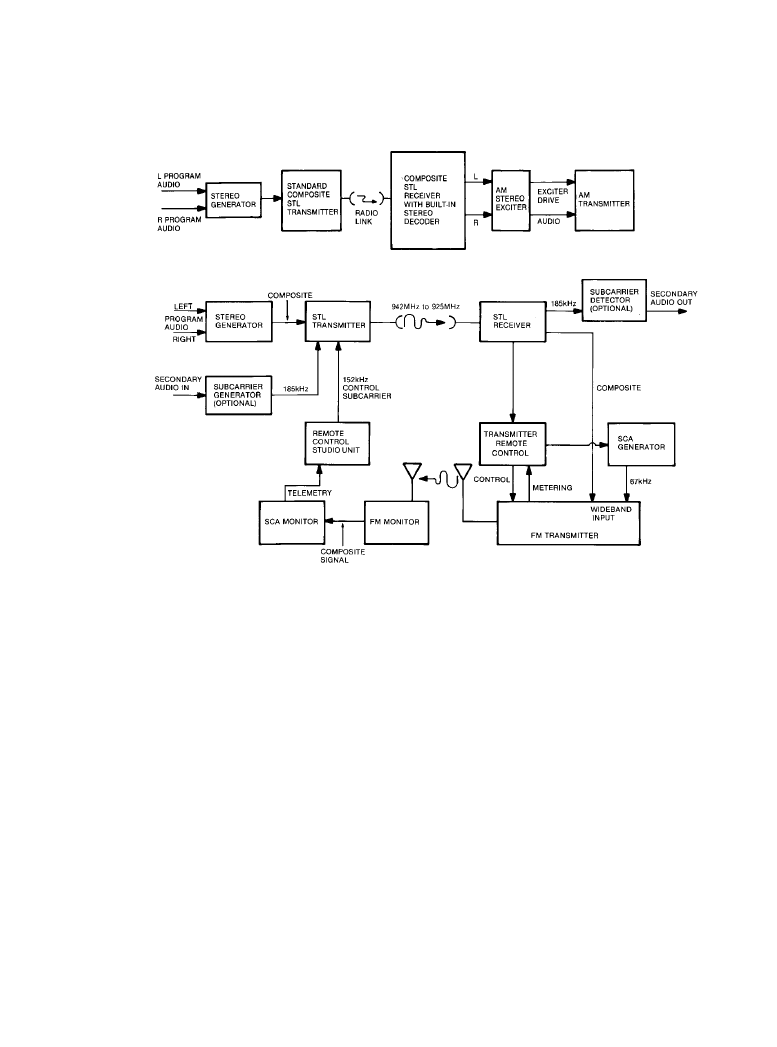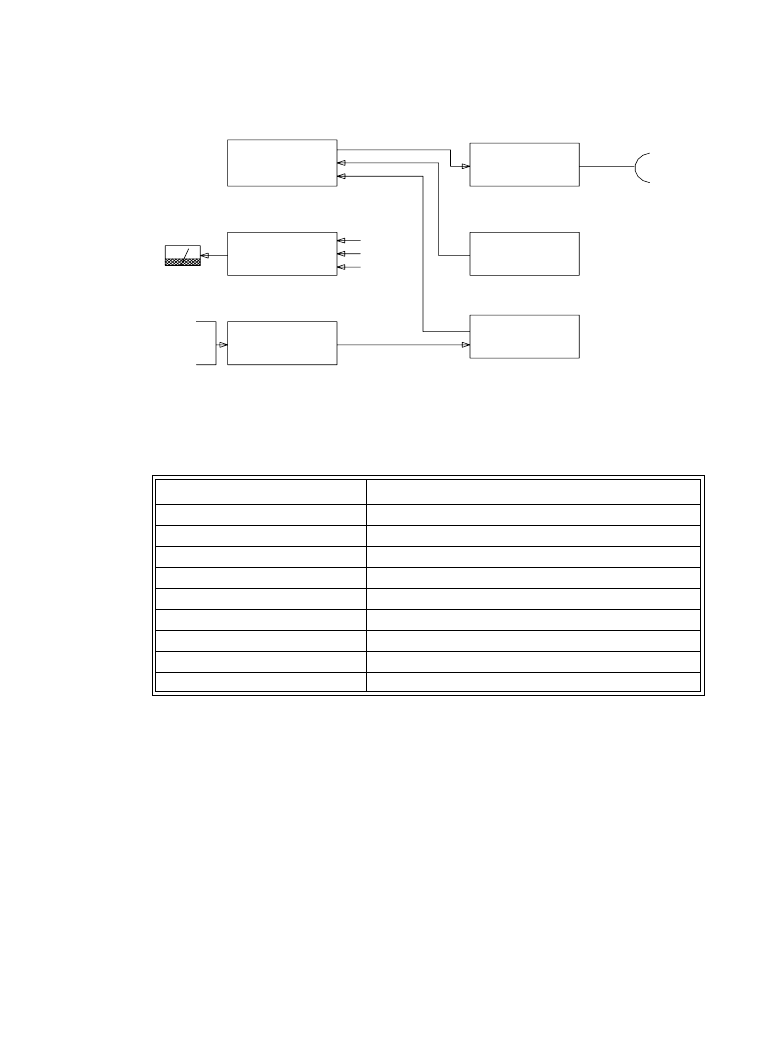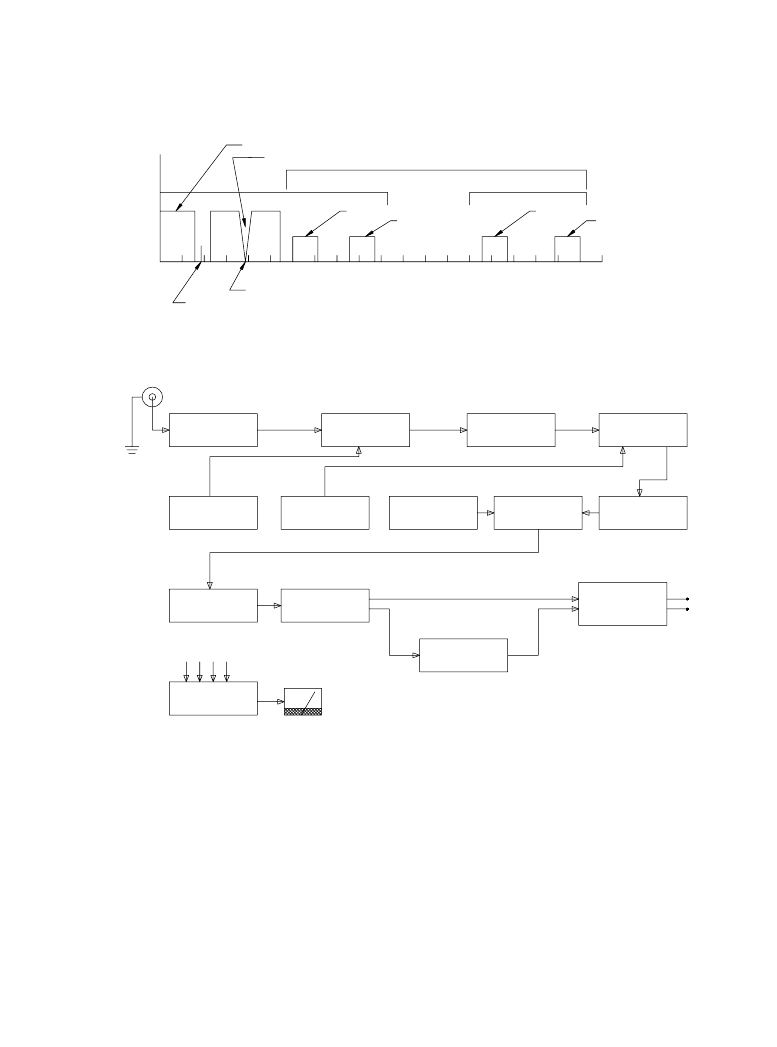ВУЗ: Казахская Национальная Академия Искусств им. Т. Жургенова
Категория: Книга
Дисциплина: Не указана
Добавлен: 03.02.2019
Просмотров: 21666
Скачиваний: 19

11-72 Broadcast Transmission Systems
posite STL transmitter and receiver can be extended. These features could, in some cases, make
the difference between a one-hop system and a two-hop system.
The spectrum-efficiency of a digital STL is of great importance today in highly-congested
markets. The system may, for example, be capable of relaying four program channels and two
voice-grade channels. The use of digital coding also makes the signals more tolerant of co-chan-
nel interference than a comparable analog STL.
Coding System
Several approaches may be used to digitize or encode the input audio signals. The complexity of
the method used is a function of the availability of processing power and encoder memory, and of
the resulting delay incurred during the encoding/decoding process. For a real-time function such
as an STL, significant encoding/decoding delay is unacceptable. Pulse code modulation (PCM)
is a common scheme that meets the requirements for speed and accuracy. In the PCM process,
the sampled analog values of the input waveform are coded into unique and discrete values. This
quantization may be uniform, as illustrated in Figure 11.4.7, or nonuniform. With nonuniform
quantization, compression at the coder and subsequent expansion at the decoder is performed.
By using larger quantization steps for high energy signals and smaller steps for low energy sig-
Analog
input
Anti-
aliasing
filter
A/D
converter
Encoder
Transm itter
Digital
channel
Receiver
converter
output
Analog
interpolation
filter
Smoothing and
D/A
Decoder
Transcoding
transmitter
M odulator
Analog
communications
channel
Demodulator
Transcoding
receiver
Input signal
O utput signal
(
a
)
(
b
)
Figure 8
Digital transmission system: (
a
) coding/decoding functions, (
b
) overall communications
link. (
After
[2].)
Downloaded from Digital Engineering Library @ McGraw-Hill (www.digitalengineeringlibrary.com)
Copyright © 2004 The McGraw-Hill Companies. All rights reserved.
Any use is subject to the Terms of Use as given at the website.
Radio STL Systems

Radio STL Systems 11-73
nals, efficient use is made of the data bits, while maintaining a specified signal-to-quantization
noise level. This process is known as companding (compression and expansion).
PCM encoding, in a simple real-time system, provides a high-speed string of discrete digital
values that represent the input audio waveform. Each value is independent of all previous sam-
ples. No encoder memory is required. This approach, while simple and fast, is not particularly
efficient insofar as the transmission channel is concerned. There are many redundancies in any
given input signal. By eliminating the redundancies, and taking advantage of the masking effects
of human hearing, greater transmission efficiency can be realized. Viewed from another perspec-
tive, for a given radio transmission bandwidth, more information can be transferred by using a
compression system that removes nonessential data bits.
11.4.2b
Analog Composite STL Transmitter and Receiver Characteristics
As mentioned previously, the composite aural STL is the workhorse of the radio industry. A
number of hardware variations can be found in transmitter and receiver systems, but all are
designed to accomplish basically the same goal: relay of a baseband signal from the studio site to
the transmitter. Figure 11.4.9 illustrates the basic STL configurations. A block diagram of a rep-
resentative composite STL is given in Figure 11.4.10.
The RF carrier is generated by a voltage-controlled oscillator (VCO) that is phase-locked to a
modulating VCO operating at an intermediate frequency of approximately 70 MHz. Direct com-
posite FM modulation takes place at the IF VCO, which is also phase-locked to an oven-con-
trolled crystal oscillator that serves as the master timebase for the transmitter. Because frequency
multiplication is not used, the RF carrier is an exact reproduction of the IF VCO. Therefore, a
number of potential compromises resulting from frequency-multiplication and post-heterodyne
filtering are eliminated, including:
•
Degradation of S/N
•
Generation of spurious signals
•
Degraded stereo performance
IF modulation provides excellent overall stereo performance, as documented in Table 11.4.2.
In this design, the operating frequency of the transmitter is programmable by DIP switches in
12.5 kHz steps, so that frequency changes can be made in the field. The composite baseband sig-
nal accommodates the full stereo baseband, including two SCA and/or MUX channels. These
features permit all processing equipment for analog operation to be located at the studio. An
illustration of the composite baseband of such a system is shown in Figure 11.4.11.
A block diagram of the companion composite STL receiver is shown in Figure 11.4.12. Like
the transmitter, the receiver is user-programmable in 12.5 kHz steps through the use of internal
DIP switches. The front-end uses cascaded high-Q cavity filters and surface acoustic wave
(SAW) IF filters to provide high selectivity and phase linearity. Triple conversion IF is used to
feed a pulse-counting discriminator for linear baseband demodulation.
11.4.2c
Components of an STL System
Any STL installation is only as good as the hardware used to interconnect the link. All compo-
nents, from the transmitter to the output connectors, must be carefully chosen and properly
Downloaded from Digital Engineering Library @ McGraw-Hill (www.digitalengineeringlibrary.com)
Copyright © 2004 The McGraw-Hill Companies. All rights reserved.
Any use is subject to the Terms of Use as given at the website.
Radio STL Systems

11-74 Broadcast Transmission Systems
installed. A well-designed system will provide years of trouble-free service. A poorly-designed
system will cause problems on a regular basis.
Transmitter and Receiver Requirements
When choosing an STL transmitter, it will be necessary to select a unit that will deliver sufficient
power to overcome the losses determined by path gain/loss calculations. Figure 11.4.13 provides
a starting point for system planning. In cases where additional power is needed, a separate power
amplifier can be used. For convenience in manipulating figures, the transmitter power output
should be converted to gain in decibels above a 1 mW reference (dBm). (See Table 11.4.3.)
When choosing an STL receiver, specifications should be carefully analyzed, particularly
receiver sensitivity. This figure, necessary in STL path calculations, is usually specified as a sig-
nal level required for a specified S/N. This value should be converted to dBm. (See Table
11.4.4.) For example, a receiver may require 100
µV for 60 dB S/N. This is equivalent to –66.9
dBm. In receiver design, sensitivity, S/N, selectivity, and the method of demodulation are deter-
mining factors of receiver quality. The use of SAW filters provide sharper selectivity and more
(
a)
(
b)
Figure 11.4.9
Analog composite STL links: (
a) AM radio application, (b) FM radio application.
(
After [2].)
Downloaded from Digital Engineering Library @ McGraw-Hill (www.digitalengineeringlibrary.com)
Copyright © 2004 The McGraw-Hill Companies. All rights reserved.
Any use is subject to the Terms of Use as given at the website.
Radio STL Systems

Radio STL Systems 11-75
linear phase response. These attributes yield better stereo separation and lower distortion. A
pulse-counting discriminator also provides low distortion and accurate demodulation of the
received signal. Phase-linear lowpass filtering is critical for best stereo separation.
A low-noise RF preamplifier may be added to the system when the received signal level is
low. For best performance, the preamplifier should be mounted directly at the receive antenna.
Care must be taken, however, to prevent overloading the receiver front-end by unwanted, and
often strong, interfering signals.
In areas of frequency congestion, narrowband receivers are important in preventing interfer-
ence from other transmitters. STL manufacturers have responded to the needs of broadcasters in
congested RF environments by providing suitable narrowband STL systems. Such receivers typ-
ically incorporate bandpass cavity filters, helical resonators, or mechanical coaxial filters. SAW
filters and ceramic filters in IF stages also may be included to improve selectivity.
M ixe r/
up -co n ve rte r
M ete rin g
circu itry
B a se b an d
p roc es so r
R F p o w e r
a m p lifier
L oc al
o s cilla tor
an d m ultip lie r
S yn th e size d
d irec t-F M
o s cilla tor
C om p os ite
M U X 1
M U X 2
S ta tu s
in p uts
In p ut sign a ls
A n ten n a
Figure 11.4.10
Block diagram of a composite STL transmitter. (
After [2].)
Table 11.4.2 Specifications for a Typical Composite STL System
(
After [2].)
Parameter
Specification
Power output
6 to 8 W
Frequency stability
±
0.0002%, 0 to 50
°
C
Spurious emissions
60 dB below maximum carrier power
Baseband frequency response
±
0.1 dB or less, 30 Hz to 75 kHz
Stereo separation
Greater than 55 dB at 1 kHz
Total harmonic distortion
0.02%, 75
µ
s deemphasis
S/N
85 dB below
±
75 kHz deviation, 75
µ
s deemphasis
Nonlinear crosstalk
50 dB or less
Subchannel-to-main crosstalk
60 dB or less
Downloaded from Digital Engineering Library @ McGraw-Hill (www.digitalengineeringlibrary.com)
Copyright © 2004 The McGraw-Hill Companies. All rights reserved.
Any use is subject to the Terms of Use as given at the website.
Radio STL Systems

11-76 Broadcast Transmission Systems
Choose a monaural, composite, or digital STL as needed. Compare performance specifica-
tions and carefully analyze the long-term benefits of each system. Examine what the STL will
need to handle two or five years from now.
20
0
40
60
Rel
at
iv
e am
pl
it
ude
Baseband frequency
80
100
120
140
160
180
200
Subcarriers
Broadcast signals
Non-broadcast signals
19 kHz pilot
38 kHz center
L+R main channel
L-R subchannel
185 kHz center
152 kHz center
92 kHz center
67 kHz center
Figure 11.4.11
The baseband of a composite STL transmitter. (
After [2].)
Preselector/
preamplifier
First
mixer
70 MHz
IF amplifier
Second
mixer
First local
oscillator
Second local
oscillator
Third local
oscillator
Third
mixer
10.7 MHz
IF amplifier
3 MHz
IF amplifier
FM
demodulator
Mute
circuitry
Composite
baseband
processor
Metering
circuitry
RF input
Output
signals
Status input signals
Figure 11.4.12
Block diagram of a composite STL receiver. (
After [2].)
Downloaded from Digital Engineering Library @ McGraw-Hill (www.digitalengineeringlibrary.com)
Copyright © 2004 The McGraw-Hill Companies. All rights reserved.
Any use is subject to the Terms of Use as given at the website.
Radio STL Systems